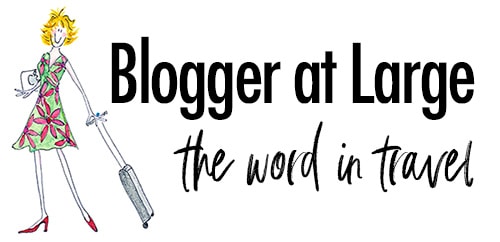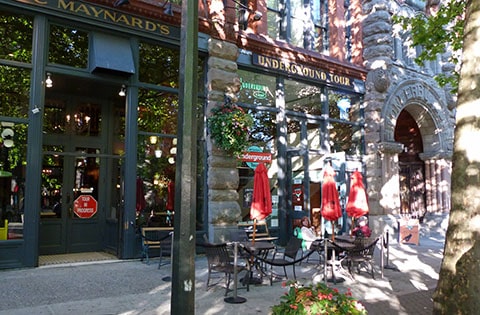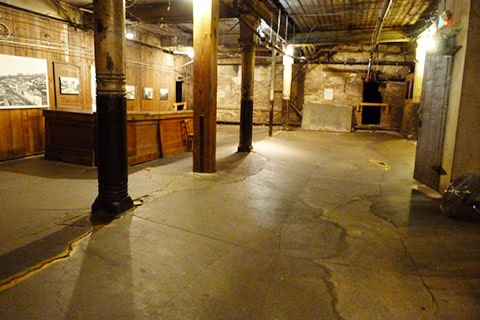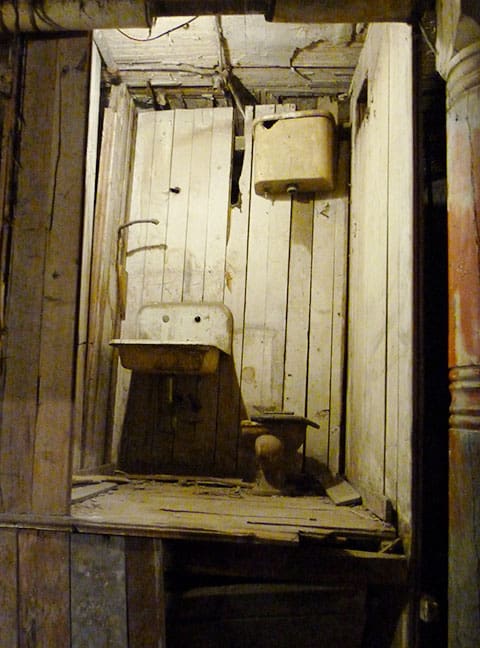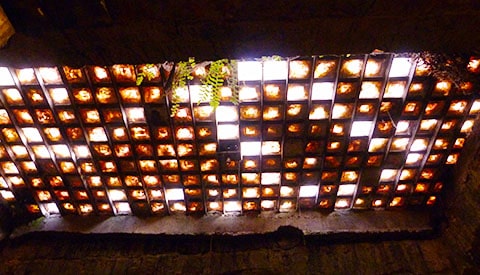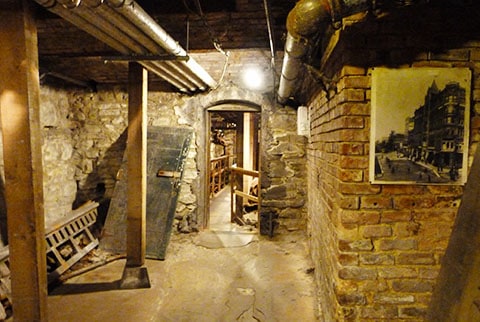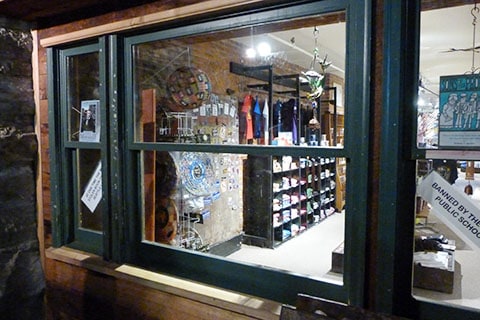It just came up in passing while I was in Seattle that there is an entire network of underground streets and old shops, some still in use, under the city.
What! Who knew? Certainly not me. So what’s the first thing I did? Why Google a tour that I could take me into the bowels of Seattle, of course.
So here’s why there is a whole underground of streets… Back in the day, waaay back in the day, Seattle was built down at sea level, at the swampy bottom with forestry towering on the hills above.
Have you heard of Skid Row? It originated here actually, as Skid Road, named for the logs that were shoved down from the highlands to the waterfront lumber yard to be shipped around the world. (Keep that fact in your head for your next Pub Trivia night.)
But Seattle was (quite short-sightedly) founded on low lying tidal land which would flood and become muddy and unusable. It caused no end of worry, especially when it came to sewer systems (a single pipe running down the hill to the sea which would get blocked during floods. Nice).
As well as this little inconvenience, all the waterfront buildings were made of wood and lo, on the afternoon of June 6, 1889, the city was changed forever. The local cabinet maker knocked over his hot glue pot which caught fire and burnt down 25 city blocks.
The good news!
The Great Fire of Seattle had two upshots: the rat infestation that was bringing fleas and disease to this mucky, sopping part of the city was halted, and the opportunity to rebuild up the hill suddenly presented itself.
After that a new edict was enforced that new buildings must be made of brick or stone and that they would rebuild the city a story higher, above the troublesome water line.
At the time the people who had lost their businesses couldn’t wait for what some predicted might be 10 years before the regrading of the new street above was finished, with the limited engineering knowledge and materials of the day.
They reached a compromise: They’d slap up new shops and pubs on their original sites while the city was rebuilt above them, eventually allowing them to use their second story as their new street frontage.
And the ground floor buildings would then become basements. Genius.
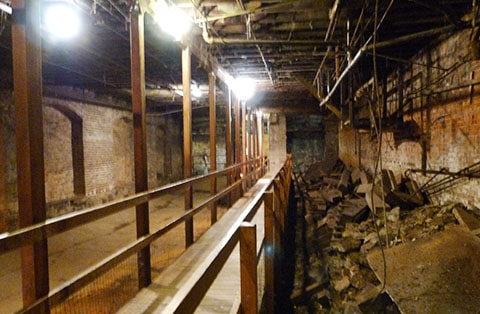
After the new Seattle was built on top, the buildings below fell into disrepair and disrepute.
Gambling halls, speakeasies and opium dens meant underground Seattle was eventually closed off and today only those businesses who own their buildings with basements can use them.
Today this whole area owes its preservation to a Mr Bill Speidel. In 1965 Pioneer Square was about to be dismantled, but passionate historian Speidel managed to stop that work and it was he who started the Underground Tour that I found myself on.
I skedadled from Pike Place down to Pioneer Square on 1st Ave (now two blocks back from the waterfront) to take the last tour of the day (at 6pm) where I listened to a witty retelling of life in the 19th century.
We then disappeared down various staircases I’d never have noticed, that took us under the streets, to wander past derelict shop fronts, through pubs, under glass skylights in the pavement above and past brick walls that for a while were still used with ladders to get up and down. (I’m picturing women in their 1890 dresses and petticoats climbing the ladders with groceries and kids under each arm).
A fascinating hour and for $30 with a tour guide that is quite hilarious and brings this era to life, well worth it.
Check out tickets for this 1-hour Seattle underground walking tour with Get Your Guide.
Other things to do in Seattle
My next stop was a visit to the Boeing factory to see the new 787 Dreamliner that Air New Zealand took delivery of – and I got to fly back to Auckland direct from the factory runway!
There are loads of great things to do in Seattle, from visiting the top of the Space Needle to getting out on the harbor, to drinking coffee at the very first Starbucks and of course, the famous Pike Place Market where the vendors throw slippery fish across the warehouse for their colleagues to catch and wrap for customers. They’ve made workplace training videos about this place!
If you drive the Pacific Coast Highway, most people drive between Los Angeles and San Francisco (which I did in five fabulous days), but technically you should keep going north all the way to Seattle, Washington.
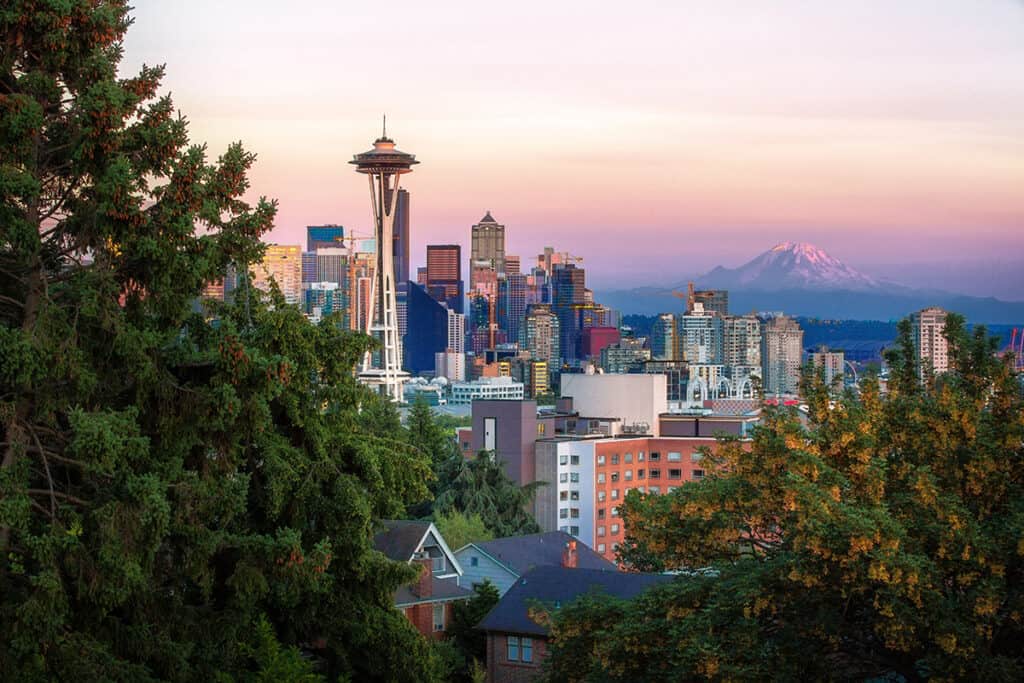
FAQs about Seattle
How did Seattle get its name? It was named by Dr David “Doc” Maynard who befriended Chief Seattle, of Duwamish and Suquamish tribes, as the two men worked together building what became the great city. Today you can get a drink and a bite at Doc Maynard’s Public House, located in Pioneer Square, where his original house stood 200 years ago.
